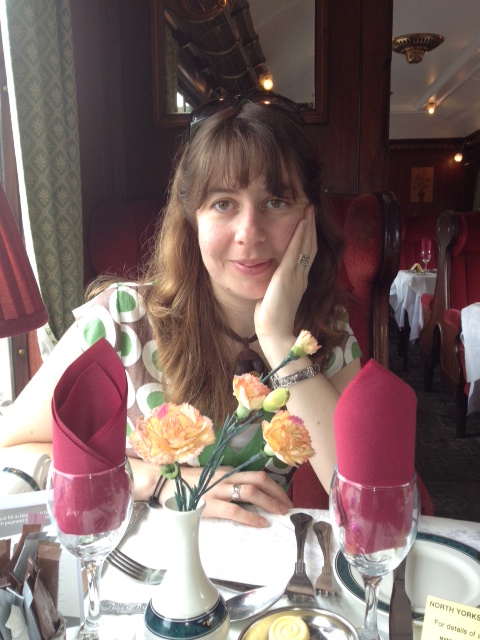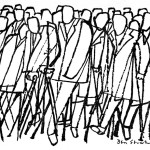We get the script and all read it. The director will give me a brief as to things he is inspired by or what he would like it to look like. Then it’s me going away and getting inspirational images or I’ll draw images, or source images. We will then have another meeting with initial sketches – these can be very detailed or ‘back of an envelope’ to get a rough feeling for the space.
We’ll try to get the practical things established first like positions and then it’s all about getting into the detail, the aesthetic. After this I will do more detailed sketches and prepare a 1:25 scale model.
It’s then we’ll agree if that’s the direction we’re going in – and if so, then we build it! Of course sometimes it takes some head scratching to come up with the right solutions but it’s not terribly difficult.
For the new production, Not About Heroes, our initial chat happened about a year ago but we usually start working on a production about two months before as we have done with this production.
The director, Eliot Giuralarocca, was keen to do something non-traditional so there are no sandbags. He wanted a slightly different stamp and look to the show. This was nice because it makes my job more challenging. So the starting point was not traditional: we looked for scrapbook images; various images of art happening at the time, abstract images from war photographs; for example those pictures of a barren no mans’ land – it’s quite a haunting image. Eliot wanted something more sculptural; it was a case of finding the right sculpture. For this production I’ve made about five or six macquette models for him that we’ve played around with, discussing the merits and disadvantages of each. And we’ve gone for a selection of little figures – they could be the lost soldiers, they could be the lost monuments… you’re not looking at anything instantly recognisable. Eliot seems very happy so I hope it’s all right!
That’s the broad set and now there is the detail to go through. Eliot didn’t want a production that involved lots of moving of chairs and furniture. This next stage involves him experimenting with rehearsal furniture and deciding if this is a useful element to have or not. We’ll discuss how to proceed but we’re going with the possibility of a black box. This becomes rehearsal led rather than design led; and it’s often how this part works. We don’t have a traditional backdrop; black floor and white backdrop and somebody is going to create a number of projections but this hasn’t quite been decided. The closest thing to compare this with is in O What a Lovely War!
where photos are projected onto a screen. For Not About Heroes, it might be more abstract – maybe with water, maybe with leaves, maybe with a textual element; it adds another layer. Eliot will go away and try to see what he wants from each scene and we’ll look at it together.
These meetings happen throughout the rehearsal process because someone might say ‘it would be great if we had….’ but Eliot of course has the final say. With touring productions we have to consider basics sometimes – we could be restricted to the size of the van, for example; if you’re hiring a transit or Luton you have a little more freedom.
Then the venues vary in size of course – there is not so much with this one as it’s a group of 15-20 sculptural figures that will be situated in the space – and they can go as wide or as narrow as the space we’re working in. It’s like having a version A and a version B. But that’s the nature of touring – you have to expand or contract according to the venue.
I will generally do production week – with technical rehearsal, dress rehearsal and opening night, sometimes I won’t have to do anything but other times we might be frantically building, or repainting or fixing something that has got broken but that’s the nature of the beast. You don’t know if it’s going to behave in the manner you think – although this is much more of an issue with costume.
Once the show has opened, the set is usually the responsibility of the technician – or in Blackeyed’s case whoever has the responsibility for the set for that tour as the roles are all divided up amongs the cast.
Some sets you do get attached to – sometimes you can’t face the fact they are binned. The first few years I was probably more emotional about this!
And you are…?
Victoria Spearing studied Set Design Technology at Bretton Hall. After graduating, Victoria went to work at South Hill Park Arts Centre in Reading, where Blackeyed are resident. Victoria has worked with Blackeyed Theatre on The Resistible Rise of Arturo Ui, The Caretaker, Blue Remembered Hills, Misery, The Long Lost Legend of Robin Hood and Art. She has also designed the sets for the last four pantomimes at South Hill Park and recently for the Broadway Theatre in Barking. Not About Heroes by Stephen MacDonald UK Tour Autumn 2014 details from www.blackeyedtheatre.co.uk. To read director Eliot Giuralarocca’s click here.




